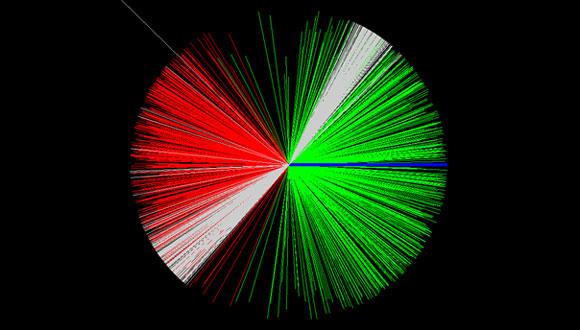Joint Seminar in Nuclear Physics
Zoom: https://us02web.zoom.us/j/84435020207?pwd=UnJITDRodE5ta1VLUXhCRDVTaU5WZz09
PROGRAM:
14:00 - 15:00 - "FRS Ion Catcher at GSI/FAIR – Mass measurements and beyond" - Timo Dickel, GSI Helmholtz Center for Heavy Ion Research, Darmstadt, Germany
Abstract:
At the FRS Ion Catcher at the FRS at GSI/FAIR a high-energy beam of exotic ions (>MeV/u) is converted into a low-energy beam (~eV) enabling experiments with high precision such as mass measurements and mass-selected decay spectroscopy. This conversion is done in a cryogenic gas volume, where the ions lose their energy via collisions with the stopping gas. Thereby cooled beams of high purity can be provided. These beams are transmitted to a multiple-reflection time-of-flight mass spectrometer (MR-TOF-MS) to perform direct mass measurements of exotic nuclei to investigate nuclear structure effects all over the chart of nuclei and provide important information for astrophysics.
The unique performance of the FRS Ion Catcher has been used for measurements besides such “conventional” experiments for investigations, such as: (i) spontaneous fission studies, (ii) nuclear reactions studies (i.e., multi-nucleon transfer reactions), (iii) simultaneous measurements of masses, half-lives, decay branching ratios (e.g. beta-delayed neutron emission) and isomer excitation energies, (iv) isomerically clean beams, and (v) studies of super-deformed (fission) isomers. This shows the wide opportunities provided by such a powerful and flexible system. Results and future plans will be discussed.
15:00 - 15:30 - break
15:30 - 16:30 - "Accurate mass measurements at the edges of nuclear stability, and their implication on the proton-neutron interaction strength" - Israel Mardor, Division of Nuclear Physics and Engineering, Soreq NRC
Abstract:
Nuclear mass measurements provide the values of nuclear binding energies, which reflect the sum of interactions among its constituent nucleons.
Accurate knowledge of nuclear masses has wide applications to nuclear structure, fundamental interactions and symmetries, and astrophysics.
Certain double differences of neighboring nuclei binding energies provide empirical values for the average interaction strength of the valence protons and neutrons. The proton-neutron interaction strength is considered to be related to the of spatial overlap of the last neutron(s) and proton(s) wave functions, collectivity and deformation, and Wigner’s spin-isospin SU(4) symmetry of N=Z nuclei.
We performed mass measurements of As, Se and Br nuclei toward the N=Z line with the multiple-reflection time-of-flight mass spectrometer (MR-TOF-MS) of the Fragment Separator (FRS) Ion Catcher at GSI. We achieved an unprecedented mass resolving power of almost 1,000,000, leading to relative mass uncertainties of short-lived rare isotopes that are as good as 1e-7 with less than 10 accumulated events and 1e-8 with merely a few hundred events.
Such performance places the MR-TOF-MS at the level of Penning traps, the ‘gold-standard’ of atomic mass spectrometry, which are slower and less efficient. This high resolving power is the only way to achieve accurate results and resolve overlapping peaks of short-lived exotic nuclei, whose total number of accumulated events is always limited.
Our results show that the measured re-strengthening of the proton-neutron interaction for odd-odd nuclei along the N = Z line above Z = 29 (recently extended to Z = 37) is hardly evident at the N − Z = 2 line, and not evident at the N − Z = 4 line. This indicates that this re-strengthening is a unique feature of medium-mass N=Z nuclei, and is counter-intuitive since first principles suggest the decrease of the proton-neutron interaction strength with nuclear mass.
On the other hand, detailed structure of the proton-neutron interaction along the N − Z = 2 and N − Z = 4 lines, confirmed by our mass measurements, may provide a hint regarding the ongoing ≈500 keV discrepancy in the mass value of the N=Z nuclide 70Br, which prevents including it in the world average of Ft value for super-allowed 0+ → 0+ β decays.
The reported work sets the stage for mass measurements with the FRS Ion Catcher of medium-mass nuclei at and beyond the N = Z line, including the nuclide 70Br.
Furthermore, we plan to measure accurately the masses of intermediate n-rich nuclei with similar valence proton and neutron numbers above doubly-magic cores, for which empirical enhancements of the empirical proton-neutron interaction have been observed, suggesting interpretations in terms of nuclear deformation and the possible emergence of a 'mini-Wigner' symmetry in this region.


